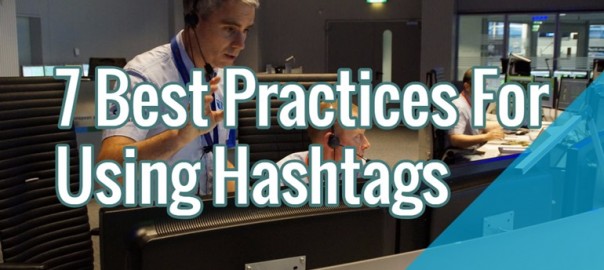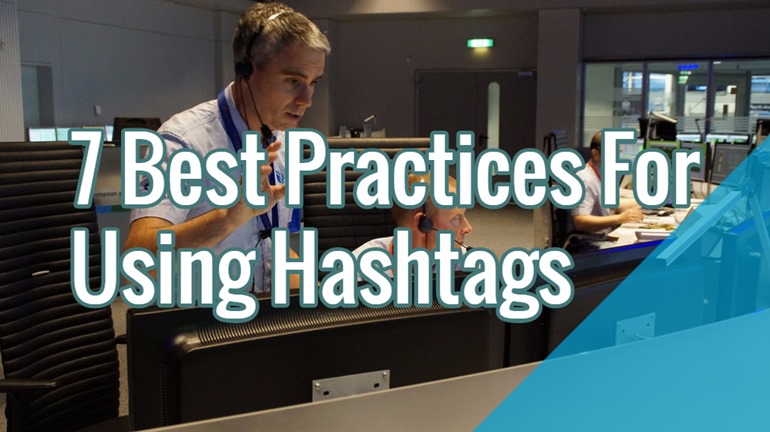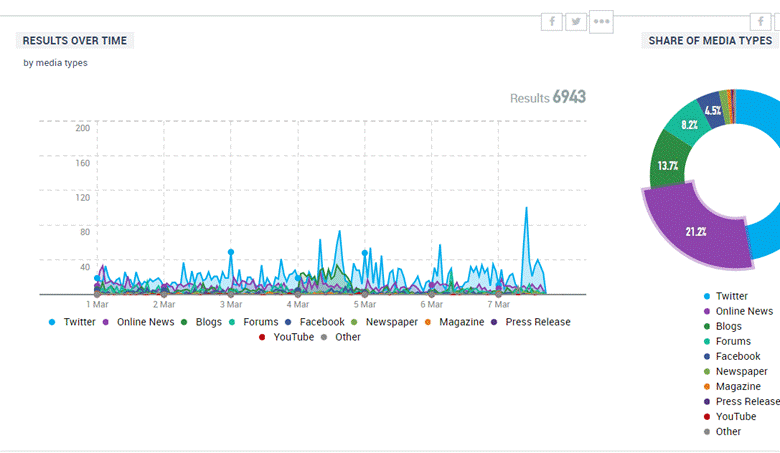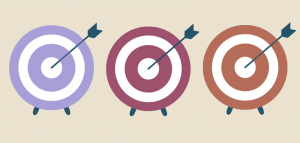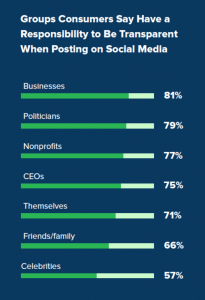If you’re using social media, you can’t avoid using hashtags. They are everywhere, having spread from their original home on Twitter to almost every social media platform. The question is: how do you use them well?
Why Use Hashtags?
Before getting into best practices for using hashtags, let’s take a look at how they help you online.
Content Discovery and Sorting
For a start, every social media channel is overflowing with content. Just to pull a few stats from Domo’s latest Data Never Sleeps chart, every minute:
- Pinterest users pin 9,722 images
- Twitter users send 347,222 tweets
- Instagram users like 1,736,111 photos
- Facebook users like 4,166,667 posts
That’s a lot of stuff to wade through when you’re trying to find a single item. Hashtags are a great search and sort tool so you can easily identify the content that’s most important to you.
Hashtags can also be used for content discovery across social media sites, for example when using a tool like Social Mention to see what people are saying about a particular topic around the web. They work via a regular Google search, too.
Trend And Brand Monitoring
Using the right hashtags can show that you’re in tune with current trends, allowing you to take part in the conversations that matter to your customers and your audience. And they help you connect with people generally around shared interests.
Hashtags also work well for monitoring your brand or branding something that you offer online. An example is the weekly myBlogU Twitter chat:
You can even use them to add some humor and personality to your social media posts, says Susan Orlean, who recommends hashtags as a form of commentary.
7 Best Practices For Using Hashtags
So relevance, branding, content discovery, tracking and personality are some of the advantages of using hashtags. But how do you get these benefits? Here are some best practices for using hashtags.
1. Check For Uniqueness
If you’re going to start a new hashtag and plan to use it regularly, then make sure it’s unique. The last thing you need is to invest in promoting a hashtag that someone else is already using. There are two things you can do to find out.
First, search on Social Mention or your favorite search engine and see if your planned hashtag comes up.
Second, and better, use Hashtags.org to see if your chosen hashtag is in use. If someone is already using it, then it’s clearly not the right choice for you.
2. Avoid “Bashtags”
You can also use the dictionary on Hashtags.org to see what your chosen hashtag means. This might help you avoid hashtags that turn into bashtags because they have a totally different meaning from what you intended. And even if the meaning is OK, you can still lose out if people don’t see your brand the way you do, as McDonalds found out to their cost with #McDStories, which was meant to be positive and is still being used to bash the company many years later.
3. Use Capitals When You Need Them
One thing McDonalds did get right was to capitalize the hashtag in the appropriate places. Sure, you don’t need this for search, but if you’re looking to improve brand recognition and readability, then it’s essential. In the screenshot below, #(March 15, 2016)IForgotTo is much more understandable with the capitals than it would be without. If readers have to work to hard to understand your hashtag, it’s a failure.

4. Keep Them Short
If you look at the hashtags above, you’ll see a mix of lengths, but the best practice is to keep hashtags short. Brevity makes them easier to remember and for the platforms where space for your updates is limited, using short hashtags means you have more space for commentary and links.
5. Use Trends Wisely
As mentioned earlier, trending hashtags can make you seem more relevant to your audience so it’s a good idea to see what’s trending on individual social sites or via cross-platform search engines. But be sure that trending topics are relevant to your brand. If you can’t integrate a trending topic into your overall brand identity, then forget it. Sometimes, though, the planets are in alignment, as in #NationalFriedChickenDay for Blue Ribbon Fried Chicken.
6. Understand Hashtag Use On Different Sites
Every social media site uses hashtags slightly differently, so it’s important to know what the conventions are on each platform. Here’s a guide:
- Until Twitter’s 140-character limit is history, then using two or three short hashtags maximum is the best approach, because you need to leave room for links, commentary and @mentions.
- On Pinterest hashtags in the pin description are clickable. You can use a few, but if you have linked your Pinterest account to Twitter, then keep them short. And Pinterest has said that hashtag overuse can result in your content being demoted in search results.
- Google+ will suggest hashtags for your updates. You don’t always have to use them, especially if there’s something more appropriate or branded, but it’s a good starting point. And according to Social Media Examiner, using hashtags will take your content to an audience beyond your own circles.
- Use only a couple of hashtags on Facebook, says the latest research. The best ways to use them are for branded campaigns running across social media platforms, because posts with hashtags get less engagement than those without.
- Instagram is a hashtagger’s paradise, because you can use up to 30 hashtags to help people find your photos. And you can also use the hashtag recycling strategy to get more visibility. To do this, add hashtags in the comments, then go back later, delete them and add some more.
7. Track Hashtags
Finally, keep track of how your hashtags are doing online to see if they are working for you. You can also track trending hashtags in case you can use them for your brand. To do this successfully, you’ll need some tools. Here’s a list to get you started.
- RiteTag covers millions of hashtags and lets you see what’s happening with the hashtags you’re following. It’s a great tool for finding trending hashtags and monitoring hashtag engagement. It also works well with a variety of social media analytics tools including Hootsuite, Buffer and Sendible.
- Hashtracking provides analytics on Twitter and Instagram hashtags. You’ll need to link your account for access to the tool, which also includes influencer hashtag analysis.
- Hashtagify lets you see the top hashtags related to particular topics, and provides data on their popularity so you know which hashtags make most sense for your brand.
- Keyhole examines hashtags on Twitter and Instagram, allowing you to see real-time analysis, including conversations, influencers and media.
- Tagboard tracks hashtags across Twitter, Facebook, Flickr, Instagram, Vine and Google+.
- Talkwalker provides hashtag brand monitoring, showing reach, engagement, type of content and much more.
- Your favorite social media dashboard. No matter what social media dashboard you use, you can monitor activity around a particular hashtag so that you can use them more effectively. Here are some examples from Sprout Social as inspiration.
Conclusion
Used correctly, hashtags can strengthen your connections on social media and help you to promote your content and campaigns more effectively. Which tools do you find most effective for working with hashtags?
Hand-Picked Related Articles:
- Best Tools to Summarize Twitter Hashtags
- How To Really Use Twitter Hashtags
- How To Write The Most Optimal Social Media Status Updates
* Adapted lead image ![]()
![]() Some rights reserved by ESA_events
Some rights reserved by ESA_events
About the Author: Sharon Hurley Hall
7 Best Practices For Using Hashtags
The post 7 Best Practices For Using Hashtags appeared first on Search Engine People Blog.
Search Engine People Blog(82)
